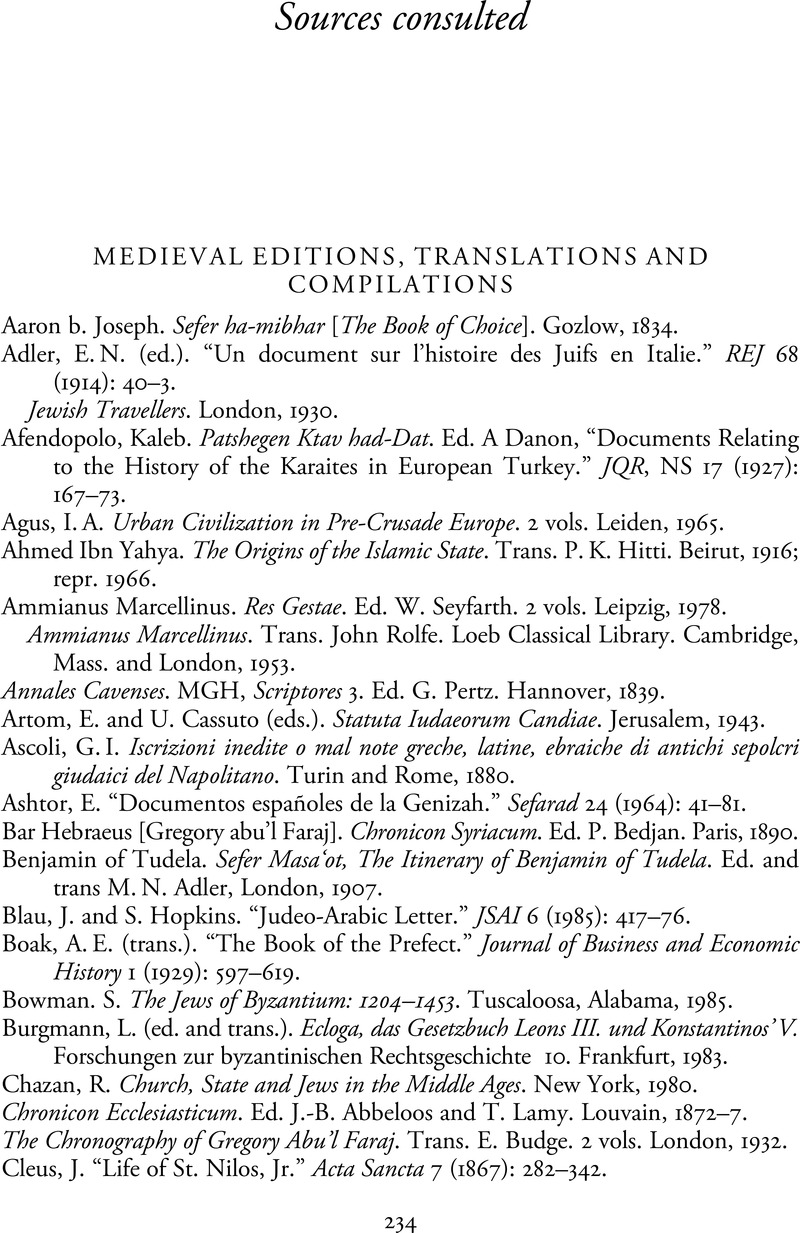Book contents
- Frontmatter
- Contents
- Acknowledgments
- List of abbreviations
- 1 Byzantine-Jewish economic history
- 2 Byzantine Jews throughout the Mediterranean: fluidity and exchange
- 3 The inner economy of the Jewish communities
- 4 The integrated Jewish economy
- 5 Byzantine-Jewish trade in the Commercial Revolution
- 6 Conclusion: a new perspective on Byzantine economic history
- Appendix A MS translations
- Appendix B MS images
- Sources consulted
- Index
- References
Sources consulted
Published online by Cambridge University Press: 29 March 2010
- Frontmatter
- Contents
- Acknowledgments
- List of abbreviations
- 1 Byzantine-Jewish economic history
- 2 Byzantine Jews throughout the Mediterranean: fluidity and exchange
- 3 The inner economy of the Jewish communities
- 4 The integrated Jewish economy
- 5 Byzantine-Jewish trade in the Commercial Revolution
- 6 Conclusion: a new perspective on Byzantine economic history
- Appendix A MS translations
- Appendix B MS images
- Sources consulted
- Index
- References
Summary

- Type
- Chapter
- Information
- Byzantine Jewry in the Mediterranean Economy , pp. 234 - 264Publisher: Cambridge University PressPrint publication year: 2009



